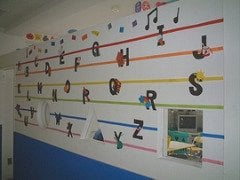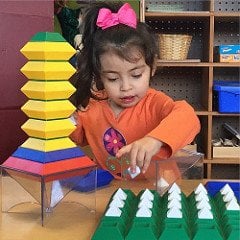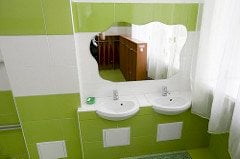PRE-SCHOOL EDUCATION IN INDIA IS WORTH RS 8,000 CRORES AS AN INDUSTRY AND GROWING AT A RATE OF 35% ON A YEARLY BASIS.
Whether it be providing the right education to your own toddlers or as a business opportunity, this industry has all the makings of being on an upward trajectory for a long time to come.
Here, we provide you a detailed guide on how to go about starting your own pre-school. From the conception of the idea till the wonderful sound of children laughing and having fun in a place of learning that you have created.
HOW TO START A PRESCHOOL IN INDIA
I. BUSINESS PLAN/FEASIBILITY STUDY
Just like any other new business, research and due diligence is the necessary first step for a successful venture. The relevant research has to be done to prepare a viable business plan. This plan can be broken down into the following branches:
- Motivation: The motivation behind your plan has to be clear to you. You might be disillusioned by the state of Indian education, want to ensure a quality education for your own children or just aim to start a quality pre-school which also makes a profit. Your motivation could be a combination of the above stated reasons or something else. Once you identify the ‘why’, never forget it or stray too far away from it.
- Location: The next step is to draw up a shortlist of all the potential locations for your pre-school. Ideally, a pre-school should be located in or near a residential area so as to reduce the travel time for the children and their parents. Hence, a place in a residential area or near the intersection of a residential area and a commercial road would be an ideal location for a preschool as well as for its advertisement.
- Understand Parents: This is the crucial part. Will your school satisfy or compete to satisfy parents’ needs within your chosen location? The answer to this question can be found by paying attention to and understanding the people (and more importantly young parents) living close to your future school. Various factors influence the answer. For example, nuclear families are more likely to send their children to preschool especially if both parents work. Joint families usually have the grandparents taking care of the little ones. Another influential factor is the general wealth or income levels of the neighbourhood. This will directly influence your fee structure. The architecture of the houses, mode and quality of transportation, etc., being used by the parents give a fair estimate of their disposable income.
- Estimation of Students: Once you have understood the parents, it is logical to get an estimate of the number of students that might join your pre-school. This estimate can be arrived upon through a simple survey. The survey should either be filled out or answered by the parents in the neighbourhood. You should enquire whether they have any toddlers ready for pre-school, their willingness to send their child to a pre-school, their expectations with regards to facilities, fee structure, etc. At least 50 families have to respond to the survey before you can make effective conclusions and estimate the potential strength of your pre-school.
- Space Requirement: For a pre-school consisting of 40-50 students, the ideal amount of floor space would be 2,000-2,500 square feet along with significant open play area. It should be surrounded by greenery without any dangerous machines or operations going on nearby. The surroundings should also be made child-proof. This is the benchmark you need to keep in mind during admission of students.
- Estimation of Costs: The total costs of running a pre-school can be divided into 2 components. They are fixed and variable expenses. As the name suggests, variable expenses fluctuate on a monthly basis. These expenses include, electricity, transportation, salaries, rent ,lease, etc. On the other hand, fixed expenses include mostly onetime purchases like computers, tables, boards, etc. A depreciation will be charged on them over the years. Your main investment for opening a small pre-school (with a hypothetical strength of 40-50 students) should be about ₹15-20 lakh.
- Forecasting Future: Once you figure out your breakeven point (the point at which your total expenses equal your total revenues), you can figure out your longterm motives. Your pre-school’s future can be studied and anticipated by varying the expenses/revenues on a quarterly or annual basis. At this point, you can even sketch out a rough future direction for your pre-school in terms of number of students, expansion strategy, competition, etc.
II. REGISTRATION & LEGAL REQUIREMENTS
Before taking your first step, it is vital that you equip yourself with all the information regarding your pre-school’s registration, laws it has to adhere to, safety regulations to be maintained, etc. The following legal points have to be kept in mind while opening a pre-school.
- Type of Business: A pre-school can be established on a for-profit or not-for-profit basis. If your aim is to operate it on a not-for-profit basis, then it should be registered as a Section 8 Company or as a Trust.
On the other hand, a for-profit pre-school can be registered in a number of ways. If you wish to run it by yourself, then it can be registered as a Sole Proprietorship. The responsibility for the entire business will rest on you in this case.
If your plan is to start the pre-school along with a business associate/friend/family member, then you should register it as a Private Limited Company or a Limited Liability Partnership. It is usually easier to form a partnership when compared to a company. A company or a partnership is generally advisable due to the decreased amount of risk and liability you are exposed to.
Registering a new company usually takes a duration of 4 weeks or less. It will also set you back roughly around Rs. 35,000. You will have to register your pre-school with the Registrar of Companies (RoC) located in your city.
- Taxation: As soon as your pre-school begins operating, it has to comply with tax regulations. Income tax on the profits of the pre-school is applicable on an annual basis based on the foundation of establishment (company or a partnership).
On the other hand, your pre-school will be exempt for service tax. Pre-school education is a part of the service tax negative list and hence exempted from paying service tax.
There are 3 more basic requirements necessary for any business launched in India: a PAN (Permanent Account Number) card from the Income Tax Department, a VAT (Value Added Tax) number and a TAN (Tax Deductible & Collection Number).
- Labour Laws: If your pre-school has more than 20 employees, you are required to provide them with Provident Fund payments. You will also need to pay a 1 month bonus (during a popular festival or at any other point of the year) according to the Payment of Bonus Act, 1965 if the number of employees exceed 20.
The minimum wages is another point to keep in mind. It is crucial that your employees are paid a minimum age of Rs.160 per day (depending on your State). As long as their salaries exceed this number, you should not have a problem.
- Safety Regulations & Residential Area: From the development stage, your pre-school has to be designed while keeping the safety, hygiene and evacuation regulations in mind. The appropriate officer will turn up and check your school’s suitability before you are provided the necessary license or permits to operate.
If you do end up locating your pre-school in a residential area, make sure your rental agreement allows you to operate such an enterprise. If it is located in an apartment, then it is wise to take the permission of the apartment association even though there are no laws compelling you to. The success of your pre-school is likely to depend on your positive relations with the neighbours or local residents.
III. INFRASTRUCTURE & SAFETY REGULATIONS
We are finally going to discuss about the actual running of your pre-school. Taking care of 40-50 toddlers is a lot of responsibility. You cannot have an employee looking after each and every child at all times. Hence, you can divide the responsibility more efficiently as well as make the surrounding environment (your school’s infrastructure) the safest possible place to learn and have fun. Here is a list of guidelines to act as a foundation for the operations of your pre-school.
CLASSROOMS
- Classrooms should only be on the ground or 1st floor of a building.
- If there is an elevator, its regular maintenance should be compulsory. A child should always be accompanied by a staff member during the usage of the elevator.
- A typical classroom should consist of at least 30 square feet of floor space per child. Toilets, kitchens, hall, etc., shouldn’t be included for the calculation of the floor space.
- A suitable temperature of around 25 degrees Celsius should be maintained in the classrooms.
- The rooms should naturally be clean, sanitary and dry on a day-to-day basis. They should also be properly ventilated for the smooth circulation of air.
- Classrooms should be equipped with the necessary amount of stationary needs, books, arts, activities etc., well in advance.
LUNCH & REST FACILITIES
- The lunch halls used for eating should be clean with each table consisting of no more than 8 children.
- A resting bed should be provided for any child who spends more than 4 hours per day at the school with sufficient space between 2 resting beds.
SANITARY FACILITIES
- At least 1 toilet (open seat), sink for washing and a mirror should be available for every batch of 15 children. For example, if the school strength is 45 children, then at least 3 toilets should be available for use at all times.
- A sink with available water supply should be provided in every classroom. Disposable paper cups should be provided so that children can drink water in a healthy manner.
- Basic facilities like paper towels, hand wash soap, dust bins, etc., should be provided and their usage encouraged.
OUTDOOR AREA
- Each child should be able to use or play on at least 200 square feet of outdoor play area. This play area should be easily connected to the toilet and classroom facilities.
- All the equipment included in this area should be child-friendly and regularly checked for problems.
- A child should always be accompanied by or watched over by a staff member while using this play area.
EVACUATION PROCEDURES
- Each floor of classrooms should also contain 2 ways of exit. Both exits should be accessible from all of the classrooms.
- The stairs within the emergency exits should be made of fire-resistant materials or coatings. They should contain hand rails of appropriate height.
- A simple written plan of the school’s evacuations procedure in case of fire should be posted in all classrooms.
- Fire drills should be held on a regular basis so that the staff are alert and ready to respond appropriately in case of any emergency.
FIRE EQUIPMENT
- An adequate number of fire alarm/detection/fighting equipment as well as fire extinguishers should be strategically placed across the premises.
- Automatic fire detection alarm systems are advisable to monitor spaces which are not constantly monitored or used.
- All fire detection and fighting equipment should be tested on a monthly basis and maintained in proper working condition.
- Make sure the school’s staff has the necessary information to use the equipment adequately.
OTHER SAFETY MEASURES
- The pre-school should maintain copies of latest fire as well as health safety permits and checks.
- A first-aid kit should be placed in every classroom. The staff should also trained about the basics of first-aid.
- The walls, wood or any other material which can be used by a child should not be painted with lead.
- Always have a doctor on call as well as a vehicle for transportation in case of medical emergencies.
IV. STAFF, TEACHER-STUDENT RATIO & CURRICULUM
The long-term success of your pre-school hinges on the abilities and temperament of the staff you end up hiring. There is no greater advertisement for your school than the goodwill created by positive interaction between the staff and the parents. Ideal teaching ratio as well as the quality and range of curriculum further enables you to set a high standard of education.
STAFF QUALIFICATIONS
- The teachers end up spending the majority of the time with the children. Hence, these interactions need to be based on sufficiently qualified education and training.
- The minimum requirements are a diploma/certificate majoring in Nursery Teacher Education Programme or B.Ed. The duration of this programme should be no less than 2 years. Experience with Montessori training is also advisable.
- Support staff need to be hired after discreet background checks have been made.
- All of them have to be made aware of the rules, regulations and responsibilities applicable while interacting with a child.
TEACHER-STUDENT RATIO
- More than one adult should be available to a single group of children at all times.
- A learning session should never consist less than 6 children at any age level.
- An ideal teacher-student ratio of 8:1 (8 children in a classroom with 1 teacher) for 3 yr olds and 10:1 for 4 yr olds should be maintained. The children should never exceed the number indicated in the respective ideal ratios.
- A teacher should always be paying attention to a group of students while within the classroom.
CURRICULUM OR EDUCATION PROGRAM
- The Montessori curriculum should be adapted to the various ages, needs as well as interests of the children in various classes.
- The students should also be provided the opportunity to involve themselves in various activities like
- Handling of various textures and objects,
- Activities involving drama or theatre,
- Creative arts and crafts,
- Activities making use of gross motor skills,
- Participating in various easy discussions as well as game,
- Exposure to the world of books and reading,
- Science experiments and
- Picnics or trips to the museum/zoo etc.
- Parental involvement in these activities should also be gradually increased so as to create comprehensive learning environment at school as well as home.
V. FRANCHISE
As pre-schools have become popular, pre-schools franchises have boomed as well. If you were to apply for a popular pre-school’s franchise, you would be provided with technical and logistics support right from the beginning (Business Plan) to the actual running of the school (training of staff).
The advantages of a pre-school franchise model are:
- A franchise has a set of established guidelines and practices which are up-to-date and are constantly evolving.
- The expense of setting it up is lesser as you are not alone in this venture. Technical and logistics support is provided by the main branch.
- Your marketing expenses decrease significantly because the franchise’s publicity and ad campaign is centralised.
- Your teaching staff will so be provided with constant training support and training.
- The franchise either provides or puts you in touch with the relevant suppliers in case you need stationary or other materials.
On the other hand, you will lose your creative freedom to a great degree under this franchise model. A rigid model of teaching has to be enforced so as to maintain the same set of standards across all the branches.
To start a pre-school franchise, you will be required to shell out anything between 10-20 lakh rupees. An area of around 2,500 square feet is also usually essential to begin with. Some of the famous (and extensive) pre-school franchise chains in India are Treehouse, Kidzee, Hello Kids, Shamrock, etc.



